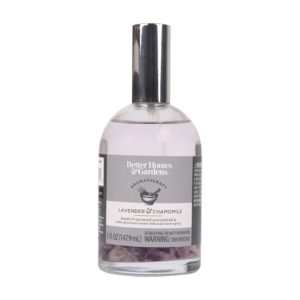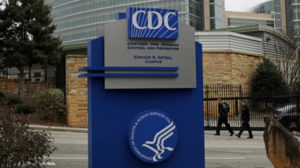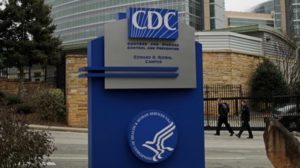A Georgia resident died this summer of a rare disease caused by bacteria that appears linked to an aromatherapy spray, the CDC said Friday.
The Georgian died of melioidosis, and was one of four people infected with bacteria similar to that found in a contaminated spray sold at some Walmart stores.

The spray, “Better Homes & Gardens Lavender & Chamomile Essential Oil Infused Aromatherapy Room Spray with Gemstones,” was found this month in the home of the Georgian who became ill with melioidosis in late July. The state Department of Public Health said the person died of the disease.
The agency did not provide any further information about the individual.
The CDC is coordinating with state health departments in Kansas, Minnesota and Texas to try to determine whether the other three patients may have also used this or similar products.
Melioidosis is a rare but serious disease, with about 12 cases reported annually in the United States. Most of the U.S. cases are connected with exposure during travel, the CDC said.
Worldwide, most cases are in people who live in or have traveled to areas where the bacteria naturally occurs, such as parts of South Asia, Southeast Asia and northern Australia. It is also occasionally found in the Americas, in places such as Brazil, Mexico and Puerto Rico.
The disease causes a wide range of symptoms that can be confused with certain common illnesses, like flu or a cold. Person-to-person spread is extremely rare.
The Atlanta-based CDC said it’s continuing testing to see if the genetic fingerprint of the bacteria in the bottle matches those of the bacteria identified in the four patients – one each in Georgia, Kansas, Texas, and Minnesota. The Kansas patient also died of the disease.
Julia Petras, an epidemic intelligence officer with the CDC, told GHN late Friday that the Kansas, Texas and Minnesota victims were diagnosed while they were in the hospital. The Georgian was found to have had melioidosis upon autopsy.
Samples of soil and water, along with household items, were collected and sampled by the agency beginning in April and May. But the spray wasn’t discovered till earlier this month, Petras said. “It’s been a very busy journey,” she said of the investigation. There is “very strong evidence” that the spray is connected at least to the Georgian’s disease, she added.

A sample of the Better Homes & Gardens spray tested positive this week for the bacteria Burkholderia pseudomallei. The genetic fingerprint of the bacteria that sickened the four patients is similar to that of strains usually found in South Asia.
The aromatherapy spray was made in India, the largest country in South Asia..
The contaminated spray was sold at about 55 Walmart stores and on Walmart’s website between February and Thursday, when the giant retailer pulled remaining bottles of the spray and related products from store shelves and its website.
The Consumer Product Safety Commission and Walmart are issuing a recall for the lavender-and-chamomile room spray and five other scents in the same product line. Investigation continues into whether other related scents and brands may pose a risk.
“Our hearts go out to the families that have been impacted by this situation,” said Dr. Inger Damon, director of the CDC’s Division of High-Consequence Pathogens and Pathology, which deals with melioidosis issues. “Our scientists have continued to work tirelessly to try to find the potential source for the melioidosis infections in these patients. We hope this work can help protect other people who may have used this spray.”

The CDC recommends that anyone who has this aromatherapy spray in their home should take the following steps:
** Stop using this product immediately. Do not open the bottle. Do not throw away or dispose of the bottle in the regular trash.
** Double-bag the bottle in clean, clear zip-top bags and place in a small cardboard box. Return the bagged and boxed product to a Walmart store.
** Wash sheets or linens that the product may have been sprayed on, using normal laundry detergent and then drying them completely in a hot dryer; bleach can be used if desired.
** Wipe down counters and surfaces that might have the spray on them with undiluted Pine-Sol or a similar disinfectant.
** Limit how much you handle the spray bottle and wash hands thoroughly after touching the bottle or linens. If you used gloves, wash hands afterward.
** If you have used the product within the past 21 days and have fever or other melioidosis symptoms, seek medical care and tell your doctor you were exposed to the spray. If you do not have symptoms but were exposed to the product in the last seven days, your doctor may recommend that you get antibiotics (post-exposure prophylaxis) to prevent infection.
For more information about melioidosis, please go to https://www.cdc.gov/melioidosis/index.html

